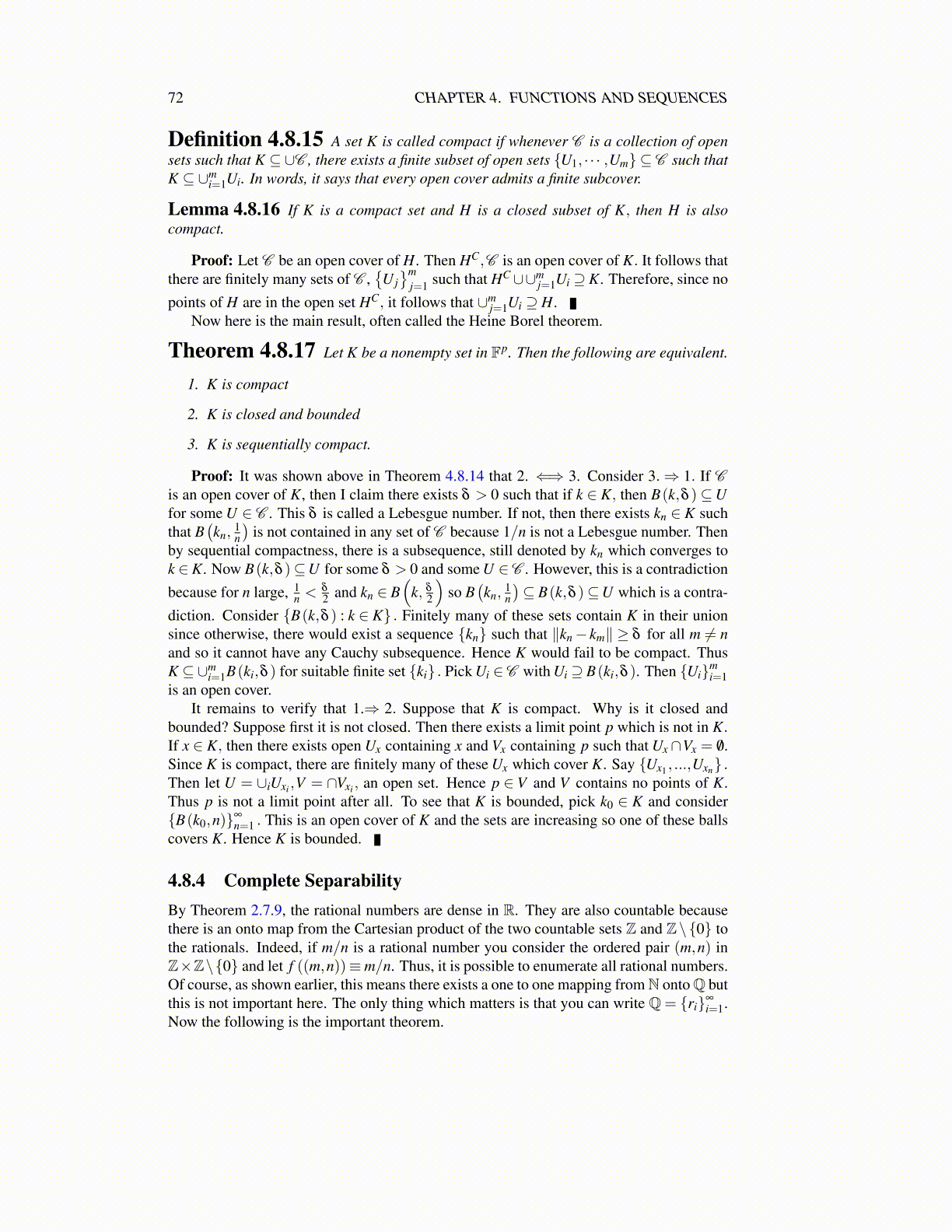
72 CHAPTER 4. FUNCTIONS AND SEQUENCES
2. Show that if H is closed and U is open, then H \U is closed. Next show that U \His open.
3. Show the finite intersection of any collection of open sets is open.
4. Show the finite union of any collection of closed sets is closed.
5. Suppose {Hn}Nn=1 is a finite collection of sets and suppose x is a limit point of
∪Nn=1Hn. Show x must be a limit point of at least one Hn.
6. Give an example of a set of closed sets whose union is not closed.
7. Give an example of a set of open sets whose intersection is not open.
8. Give an example of a set of open sets whose intersection is a closed interval.
9. Give an example of a set of closed sets whose union is open.
10. Give an example of a set of closed sets whose union is an open interval.
11. Give an example of a set of open sets whose intersection is closed.
12. Give an example of a set of open sets whose intersection is the natural numbers.
13. Explain why F and /0 are sets which are both open and closed when considered assubsets of F.
14. Let A be a nonempty set of points and let A′ denote the set of limit points of A. ShowA∪A′ is closed. Hint: You must show the limit points of A∪A′ are in A∪A′. This isshown in the chapter but do it yourself.
15. Let U be any open set in F. Show that every point of U is a limit point of U.
16. Suppose {Kn} is a sequence of sequentially compact nonempty sets which have theproperty that Kn ⊇ Kn+1 for all n. Show there exists a point in the intersection of allthese sets, denoted by ∩∞
n=1Kn.
17. Now suppose {Kn} is a sequence of sequentially compact nonempty sets which havethe finite intersection property, every finite subset of {Kn} has nonempty intersection.Show there exists a point in ∩∞
n=1Kn.
18. Show that any finite union of sequentially compact sets is compact.
19. Start with the unit interval, I0 ≡ [0,1] . In this interval, I0, remove the followingmiddle third open interval, (1/3,2/3) resulting in the two closed intervals, I1 =[0,1/3]∪ [2/3,1] . Next delete the middle third of each of these intervals resultingin I2 = [0,1/9]∪ [2/9]∪ [2/3,5/9]∪ [8/9,1] and continue doing this forever. Showthe intersection of all these In is nonempty. Letting P = ∩∞
n=1In explain why everypoint of P is a limit point of P. Would the conclusion be any different if, insteadof the middle third open interval, you took out an open interval of arbitrary length,each time leaving two closed intervals where there was one to begin with? This pro-cess produces something called the Cantor set. It is the basis for many pathologicalexamples of unbelievably sick functions as well as being an essential ingredient insome extremely important theorems.